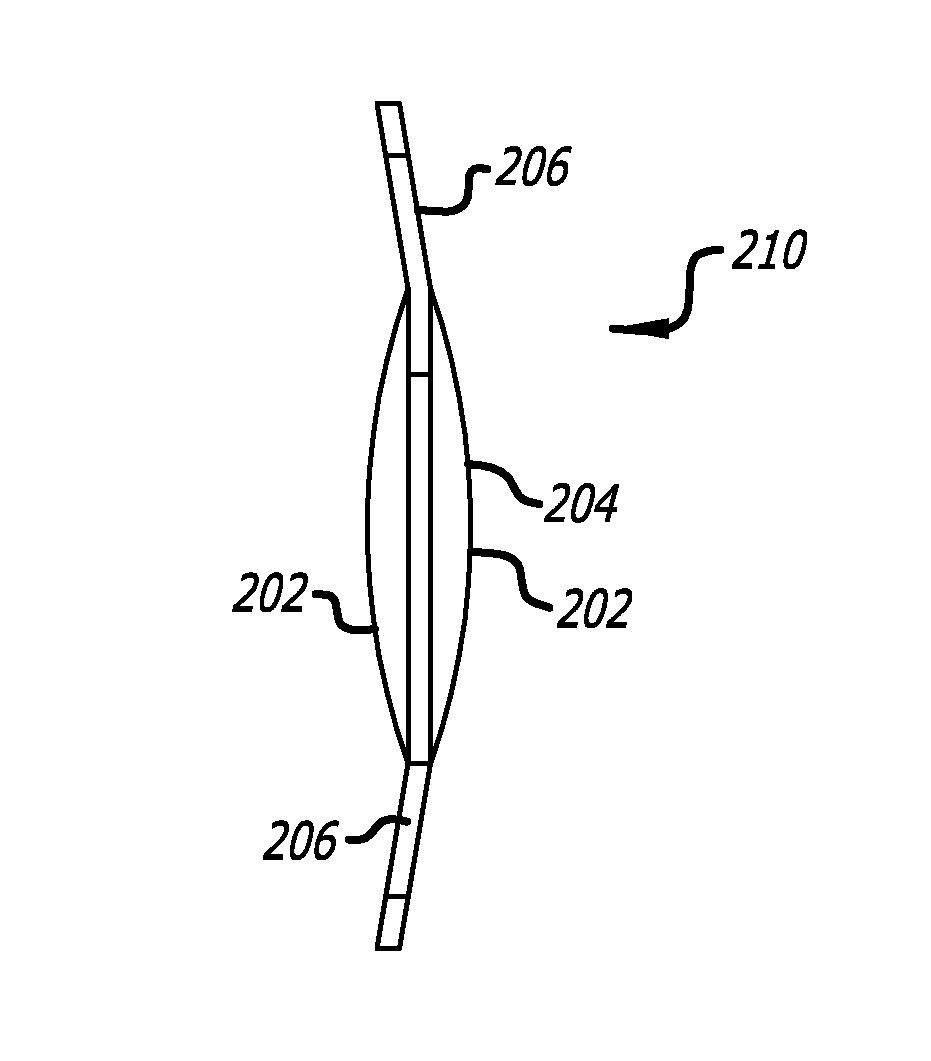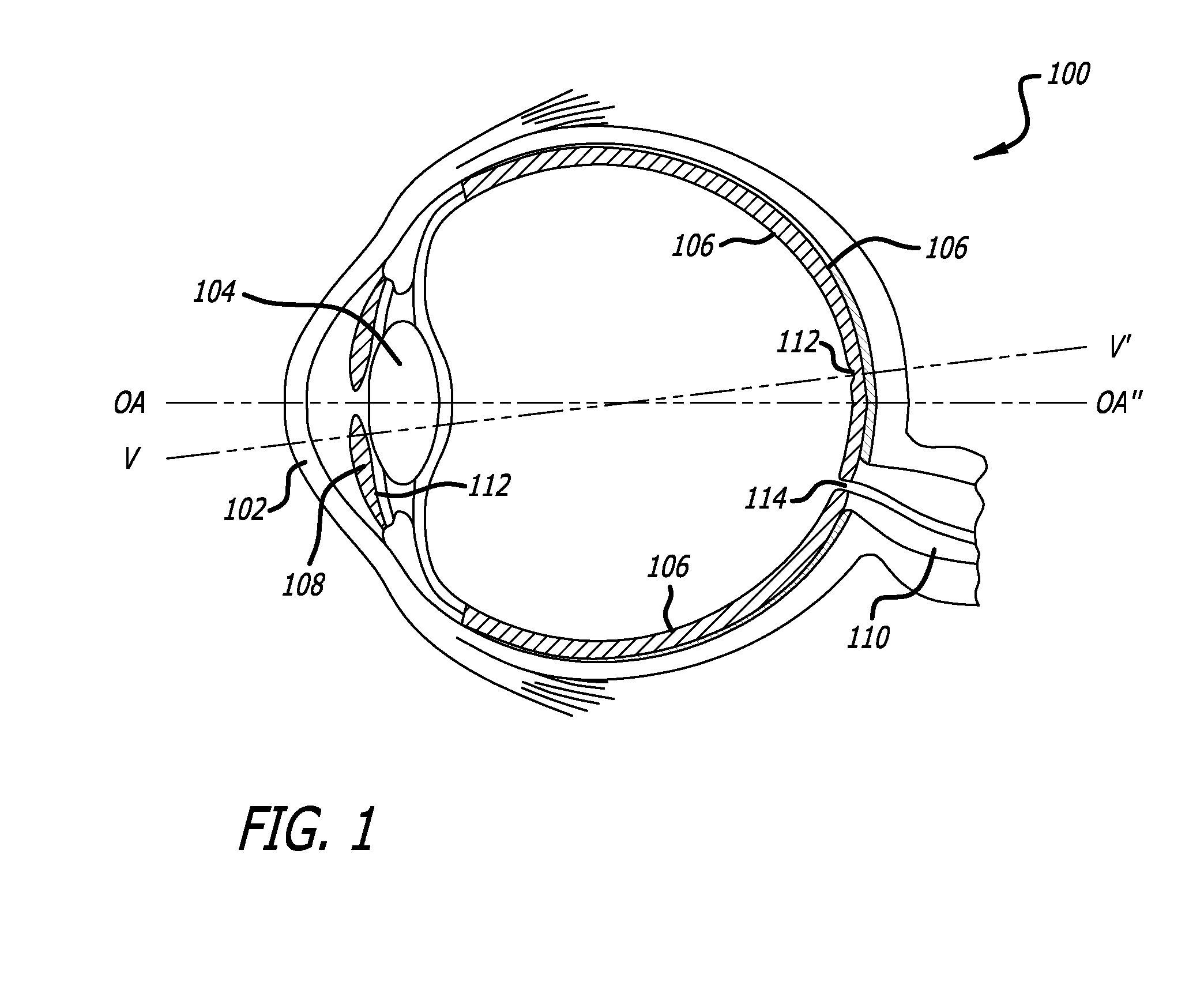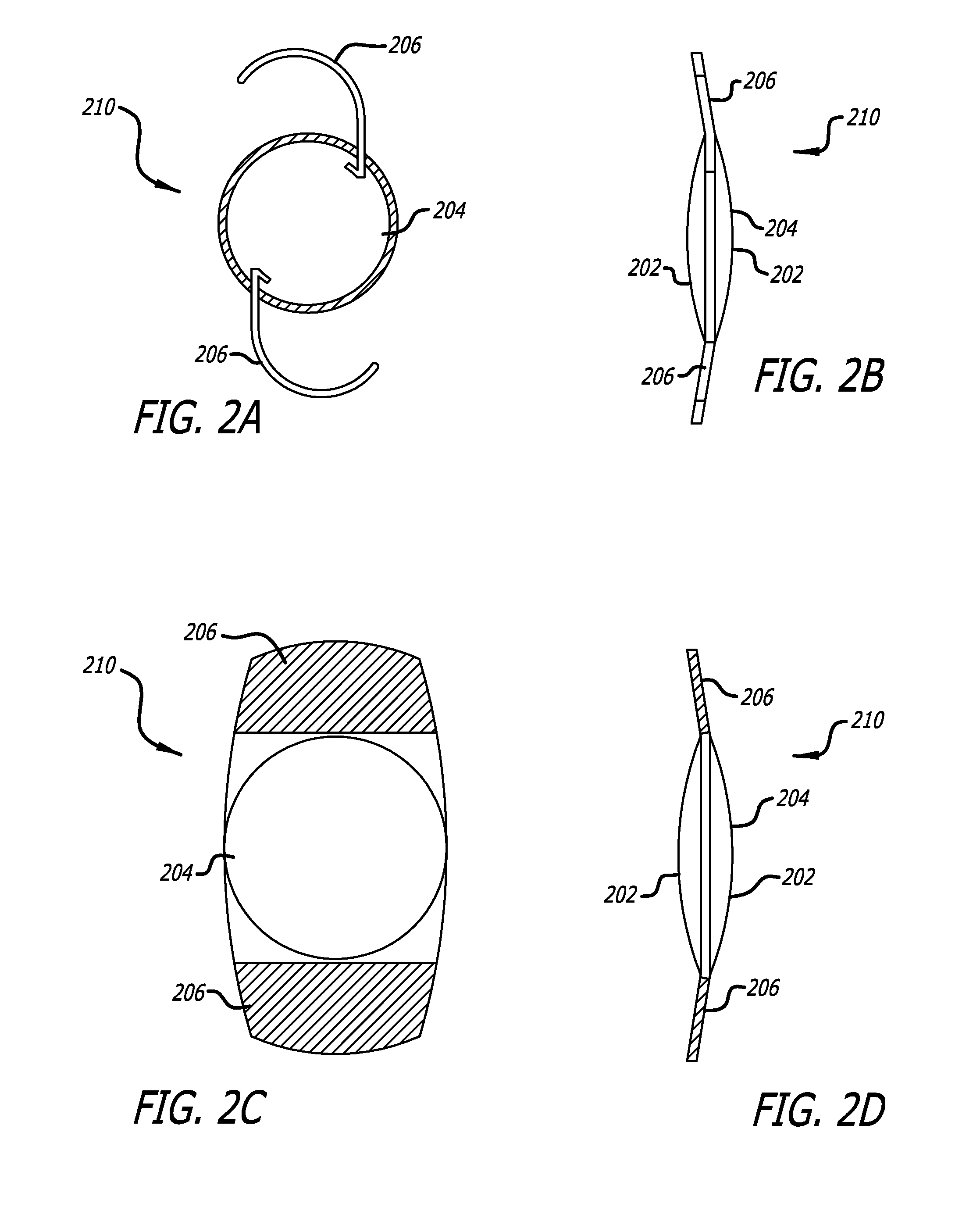Optimized intraocular lens
a technology of intraocular lens and lens lens, which is applied in the field of intraocular lens, can solve the problems of inability to realize the potential advantages of aspheric lens, poor optical performance, and aspheric lens, and achieve the effects of improving peripheral vision, improving visual acuity, and optimizing the ability of the iol to focus light on the curved surface of the retina
- Summary
- Abstract
- Description
- Claims
- Application Information
AI Technical Summary
Benefits of technology
Problems solved by technology
Method used
Image
Examples
example
[0092]In one example, starting values are selected for five lens parameters. Starting values for Rf and Rb are both set equal to 20.0 mm, starting values for Cf and Cb are both set equal to −5.0, starting value for tc is set equal to 1.0 mm, and all weights (wi) are set equal to 1. The starting merit function value (MFstart) was calculated and found to be 4.259. The design was then optimized by making small changes to the parameters and recalculating the MF. This process is continued until the lowest possible MF is found. The optimized result, with the lowest possible merit function value (MFfinal) of 0.05900 was found when the parameters had values for Rf and Rb equal to 10.536 mm, Cf and Cb equal to −0.960, and tc equal to 1.186 mm. This set of lens radii of curvature, conic constants and center thickness, together with the lens refractive index represents the best lens that can be configured which will satisfy all the conditions in the merit function for MTF, focal length, edge a...
PUM
 Login to View More
Login to View More Abstract
Description
Claims
Application Information
 Login to View More
Login to View More - R&D
- Intellectual Property
- Life Sciences
- Materials
- Tech Scout
- Unparalleled Data Quality
- Higher Quality Content
- 60% Fewer Hallucinations
Browse by: Latest US Patents, China's latest patents, Technical Efficacy Thesaurus, Application Domain, Technology Topic, Popular Technical Reports.
© 2025 PatSnap. All rights reserved.Legal|Privacy policy|Modern Slavery Act Transparency Statement|Sitemap|About US| Contact US: help@patsnap.com



